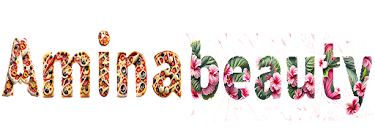Moroccan bath, a time-honored tradition cherished by women and brides-to-be, goes beyond a mere cleansing ritual—it's a holistic experience that promotes skin softness, fights signs of aging, and alleviates stress through improved blood circulation.
Let's explore the essential components and traditional tools that make the Moroccan bath a unique and rejuvenating practice.
 |
| Moroccan bath ingredients |
Ingredients
1. Ghassoul Soap: Specially crafted from Moroccan materials, Ghassoul soap is the cornerstone of the Moroccan bath. Not only does it impart smoothness and freshness to the skin, but it also addresses inflammations and redness.
2. White Henna: This magical ingredient is used to achieve a clear, white, and uniform skin tone—a key element in the pursuit of radiant skin.
3. Akar Fassi (Fassi Poppy): A red powder known as Akar Fassi is employed to provide a natural blush to the skin while ensuring a soft and supple texture.
4. Moroccan Clay: Rich in minerals, Moroccan clay plays a vital role in eliminating dead skin cells, cleansing and treating acne or pimples, and tightening pores, resulting in healthier and more beautiful skin.
5. Rose Water: Calming the skin, treating irritation or redness, and providing a silky texture, rose water is an indispensable element in the Moroccan bath.
6. Ground Perfume: A fragrant powder adds the final touch, lingering on the body for an extended period, leaving you with a captivating aroma.
7. Coarse Loofah: Crafted from plant fibers, the coarse loofah is a key tool for thorough body scrubbing, removing dead cells, and enhancing overall body smoothness.
8. Pumice Stone: This tool is employed for treating cracked heels, especially in the heel area, and removing fine hairs on the body.
9. Optional Pedicure Tools: For those who seek to enhance the appearance of their toenails, optional pedicure tools can be incorporated into the Moroccan bath routine.
Moroccan Bath Procedure
- Create a Steam-Friendly Environment: Conduct the bath in a closed, steam-friendly environment to open pores and allow the substances to penetrate the skin effectively.
- Prepare the Bath: Fill the bathtub with warm water suitable for the skin to prevent burns or redness.
- Immerse in Warm Water: Immerse your body in the bath for at least ten minutes to ensure the pores open and prepare the skin for the treatment.
- Ghassoul Soap Application: Mix Ghassoul soap with a few drops of lemon juice, apply it to the entire body, and leave it for a quarter of an hour outside the water.
- Thorough Washing: Wash the body thoroughly with hot water, ensuring the complete removal of soap.
- Body Scrubbing with Coarse Loofah: Scrub the body with a coarse loofah, focusing on rough areas like elbows and knees.
- Clay and Rose Water Treatment: Mix clay with rose water and apply it to the face for fifteen minutes to treat acne and rejuvenate facial skin.
- Rinse with Cold Water: Rinse the body with cold water to close the pores.
- Final Cold Water Wash: Finish the Moroccan bath by washing the body with cold water, leaving the skin feeling refreshed and revitalized.
Q&A Section
- Q1: How often should I do a Moroccan bath?
A1: It is recommended every 2-4 weeks for optimal results.
- Q2: Can pregnant women undergo a Moroccan bath?
A2: While it's generally safe, it's advisable to consult with a healthcare professional before proceeding.
- Q3: What are the benefits of Moroccan bath for men?
A3: Moroccan bath offers skin exfoliation, improved blood circulation, and stress relief, making it beneficial for men as well.
Conclusion
Incorporating the rich components of the Moroccan bath into your skincare routine unveils a holistic approach to well-being.
Beyond achieving radiant skin, this traditional practice provides a rejuvenating experience that transcends mere cleansing.
Embrace the beauty secrets of the Moroccan bath and indulge in a ritual that nurtures both your skin health and overall sense of well-being.
